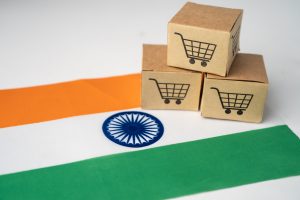The world finds itself in a full-fledged crisis and it is obvious that the COVID-19 pandemic is not going to end quickly. That said, a period of crisis leads to the emergence of new conditions that contribute to the rise of some players and the decline of others. The crisis caused by COVID-19 is no exception. Supply chains reach their breaking point causing significant business impact, but, at the same time, procurement leaders are forced to change their usual tactics. As for now, there are a few lessons that might be useful in tackling the issues in procurement outsourcing in 2021-2022.

Cheapest Isn’t Always Best
Pricing matters, however, there’s more to it. Companies with balanced procurement objectives are in a stronger position to achieve their overall procurement goals in an extreme environment. The challenge here is to obtain the optimal balance between the right price and maintaining a good relationship with the supplier. The companies that evaluated and rewarded procurement primarily on cost and not comprehensive strategic objectives are likely facing a competitive disadvantage.
Relationship with Suppliers
Relationships with the vendors are that much more critical in a time of crisis. As procurement managers continue facing inventory shortages, this problem has further highlighted the importance of good partnerships between buyers and suppliers. Strengthening these relationships gives the procurement department more leverage and easier discussions with the manufacturer when times are tough. In many cases, a good relationship with a manufacturer affects their choice of partners in procurement – if the supplier knows and trusts you, he’ll choose to work with you over other buyers. Besides, they might provide you with leads to other businesses if they are out of inventory.
Do Your Homework on Sub-Suppliers
As companies find it challenging to reconfigure their supply base during a pandemic of uncertain duration, a few lessons related to supply chain risk management can still provide instruction. It is critical to deeply analyze the suppliers’ sub-suppliers and their broader client portfolio. Risk diversification is the key. Even if a supplier is deemed low risk, regional politics or economics should also be considered. Many businesses are struggling to handle supply chain disturbances because they focus their analysis on individual suppliers without considering the bigger regional picture.
As procurement outsourcing grows and supply chains become longer and more complex, vulnerabilities are enhanced and become more difficult to quantify. While the first-tier supplier may seem low risk, it is essential to evaluate the second-tier and lower-level suppliers as well as to scan their geographical location for regional (geo) political and economic risks.
Diversification is Key
Being in the middle of the Covid-19 crisis and having the world’s two biggest economies – China and the United States – heading towards decoupling pushes all of us to reflect and readjust our assets. Having eggs in separate baskets is becoming more topical than ever before. The trade war has triggered additional diversification that already started a few years ago. Some businesses have already moved and some plan to move gradually to minimize the impact on mass production. Statistics show that Vietnam and India get most of the attention when discussing diversification away from China. Thereafter it is Thailand, Malaysia, Cambodia, and others in the region with ‘nearshoring’ also gaining in popularity, i.e., Eastern Europe and Mexico for Europe and the US, respectively. The main goal would be to find high-quality alternatives for an existing supplier base. Having a strong supply chain based in different locations can reduce risk and costs and prepare your organization for the global challenges that lie ahead in today’s dynamic trade environment.
Time to Consider Collaboration
The entire supply chain is witnessing disruptions in this current crisis. Considering suppliers and customers as partners will help to address the crucial objectives in an efficient but sustainable way. This might be payment collaboration where you reach the agreement on upfront payment if the manufacturer has no budget to start production or longer payment terms for buyers if they are facing cash flow issues. Alternatively, partner up with other organizations to purchase materials from manufacturers with bigger minimum order quantities than required for your organization.
There is no better time for innovations than a time of crisis. Sustainability has been on the table for a long time and the COVID era has only served to bring it even more to the forefront. As we all are pressed to drive a more sustainable procurement approach, why not look for the ones that create less waste and re-evaluate our purchase priorities?
Crisis Equals Opportunity
It is too early to say which adapted work practices in procurement will continue post-crisis. Considering the challenges we will face after the lockdown, the learning process is far from over. More than ever, innovation and imagination are crucial for modern-day procurement, along with establishing collaborative partnerships with the suppliers, setting balanced objectives, and developing risk-based procurement assessments.
EDS & Supply Chain Management
EDS International has an extensive global network and expertise in Asia, Europe, and the Americas. We can find and assess your ideal manufacturer, support your production transition or provide scalable, end-to-end supply chain solutions in the most suitable region for you. Our mission is to reduce your costs, risks, and complexity and to improve the efficiency of your supply chain. Have a look at EDS services and contact us today.








